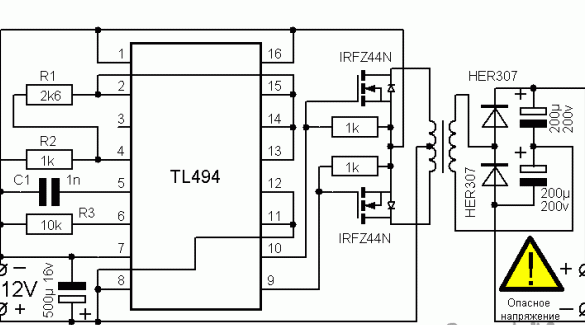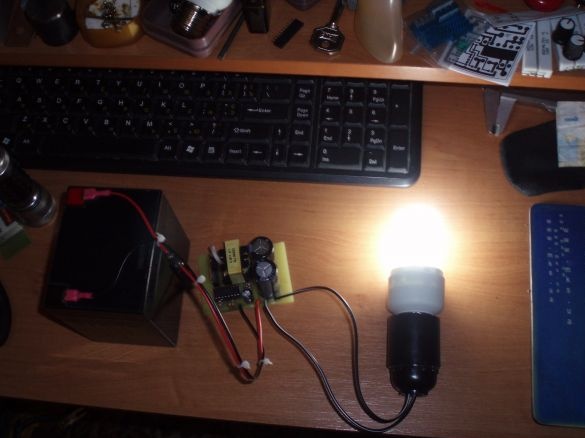It often happens that there is no electricity for various reasons, and there is no lighting. Then we put out candles, lanterns, and, at worst, kerosene lamps. Candles are smoked and flammable, the flashlight has a directional light and not always a large glow resource. I propose to make an alternative.
This design will use available components, mainly from older computer power supplies. Schematic diagram of the device is shown below:
The power source of the circuit is a 12V battery, with a capacity of at least one and a half ampere hours. ATTENTION: at the output of the circuit we get a constant voltage with an amplitude of 220 volts, BE CAREFUL !!! The role of the light source will be performed by the "housekeeper" bulb, with a power of 8 - 15 watts.
Components borrowed from a computer power supply:
- pulse transformer;
- PWM controller TL494;
- high voltage capacitors (C3, C4);
- high-frequency diodes (VD1, VD2);
The remaining components must be purchased. All components are mounted on a single-sided printed circuit board, 50mm in size. by 54mm. (minimum dimensions, excluding space for fasteners).
The PCB file is made in the program Sprint-Layout 6.0 (5.0) and is attached at the end of the article, in the archive. The file shows the board view from the component side.
Output transistors must be installed on a heat sink, a radiator, for example, from the processor of an old computer. A properly assembled device does not need adjustment and will work immediately. When turned on, the board consumes shortly about 1.5 amperes per capacitor charge, then at the end of the charge 0.75 amperes per hour.
Since there is no case yet, the radiator for testing was not screwed on accordingly.
The lamp lights up almost immediately, and shines as if from a regular mains. The lamp can be placed either next to the housing or on the ceiling as an alternative lamp.
ATTENTION: at the output of the circuit we get a constant voltage with an amplitude of 220 volts, BE CAREFUL !!!
Files:






